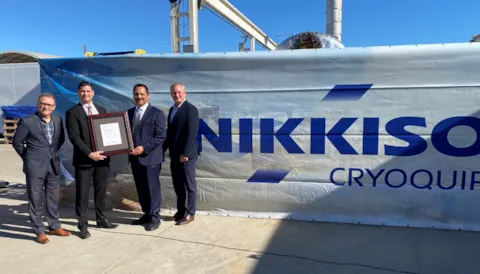 12 junio 2024
12 junio 2024 Nikkiso Cryoquip LLC reconoce el papel de DNV en la obtención de la certificación ISO 9001
Cryoquip LLC elogia a DNV por su apoyo excepcional durante la certificación ISO 9001. Como subsidiaria de Nikkiso Co., Ltd., destacan el papel crucial de DNV para asegurar un proceso de certificación sin contratiempos mediante una comunicación efectiva y experiencia técnica.